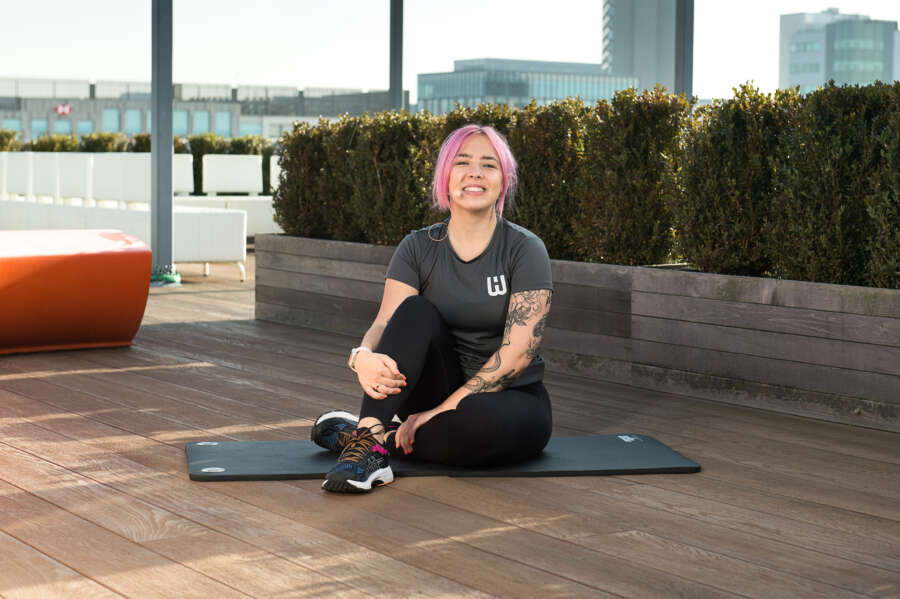
Exercise works wonders on both your mental and physical well-being. It relieves stress, uplifts your mood, and keeps you in shape. What’s not to love?
It can be difficult to maintain an exercise regime for an extended period, and hard to get back into once you stop. Whether it’s because of work, a busy daily routine, an injury, or even a pregnancy, putting your dose of regular physical activity on hold can happen quite easily.
The good news is that you can always get going again. Initially, as you restart for the first time in a while, you may feel out of breath – and that’s perfectly fine. It is normal to find it challenging when you haven’t been exercising regularly.
With some insights from May Beaufort, Health and Wellbeing Coach at Westfield Health, we take a look at some useful tips and advice on how to get back into an exercise routine without straining or pushing yourself too much.
See your doctor
First things first, it is sensible to check in with your doctor. In fact, if you haven’t exercised in years and have experienced any health issues recently, it would be especially wise to pay them a visit. They will also be able to give you guidance, offer you direction, and encourage you.
You may also want to consider getting private health insurance that would allow you fast access to private surgery, to give you peace of mind should you receive an injury.
Don’t quit at the first challenge
As mentioned, there is no hiding that sticking to an exercise routine after a long time can be tough. Feeling out of breath in the space of five minutes or less? Don’t worry, it takes time to build up your fitness, and you shouldn’t expect too much too soon.
The key to getting back in shape is to simply keep going. Try not to fall into the trap of taking long breaks between one exercise session and the next, as you will ultimately end up breaking the habit. Make sure you don’t throw in the towel and drop your programme at the first sign of trouble.
Don’t overdo it
It is important to abide by your exercise plans whenever possible but be careful not to over-indulge. In fact, once you’ve gotten into the habit, it is easy to find physical activity becomes part of your daily routine.
However, you should always listen to your body and ensure you are not overdoing it. If you start feeling achy and sore, try to ease the intensity of your workouts. This will help you keep on top of your exercise programme and stay away from potential unwanted pains or injuries.
Also, do not forget to set aside some time to rest. It is crucial for both your mind and your body to relax and unwind after a long day of work and physical exercise.
Schedule
When creating a workout routine, think about what suits you and your diary. Are you free on a Tuesday evening? Update your calendar and cut out some time for your all-important dose of exercise.
You may want to schedule your workout sessions during quiet hours, so that they are not pushed aside by other pressing tasks or everyday duties. For instance, lunch-hour exercising can be easily ‘disrupted’ by work commitments, forcing you to skip your workout slot for the day. Instead, early morning sessions or after-work programmes are less likely to be disrupted.
Make it enjoyable
There is no denying that if you do not particularly enjoy doing something you will struggle to keep it up. If exercising at the gym is not your cup of tea, have a think about what you would find more enjoyable. A relaxing, long walk in the park? A few lengths at your local swimming pool? There are plenty of opportunities to tailor workouts to your personal taste.
What’s more, many fitness centres offer a wide range of sessions and classes that might spark your interest. From Zumba to salsa lessons, there are endless fun ways to get active and regain your fitness. You may even want to consider joining with a friend!
Do it for yourself
Exercise for your own pleasure and motivation. In short, you shouldn’t take up workout sessions just to please and impress others. Physical activity requires effort and dedication, and unless it is making you feel good and giving you energy, you may struggle to stick to your programme.
Visiting the gym or venturing on a jog should be a challenging yet rewarding experience. If you are enjoying it and doing it for yourself, you’ll be more likely to keep going.
Exercise and physical activity stimulate our brain and our body. From five-minute workouts to lengthier sessions, there are several ways in which you can gradually build up your fitness – especially if you haven’t exercised in a long time. We hope this article provides you with some useful and inspiring tips on how to embrace physical activity without pushing the boundaries too far.


